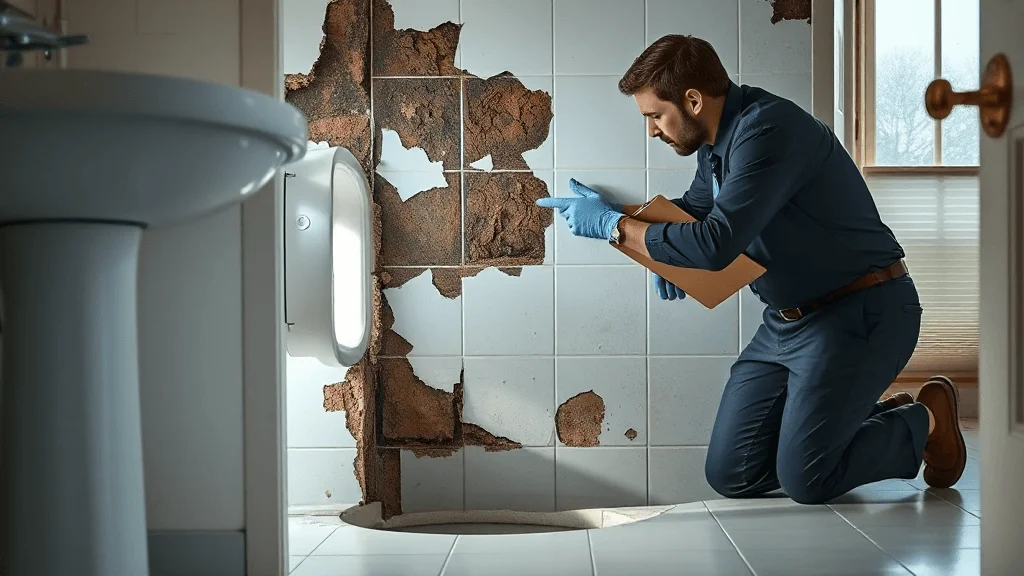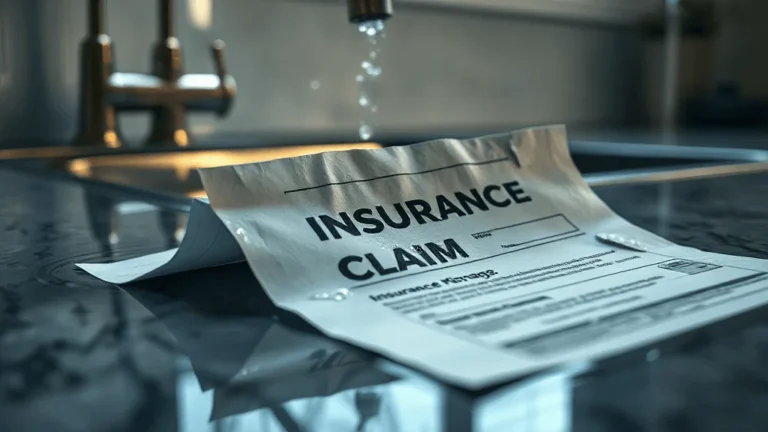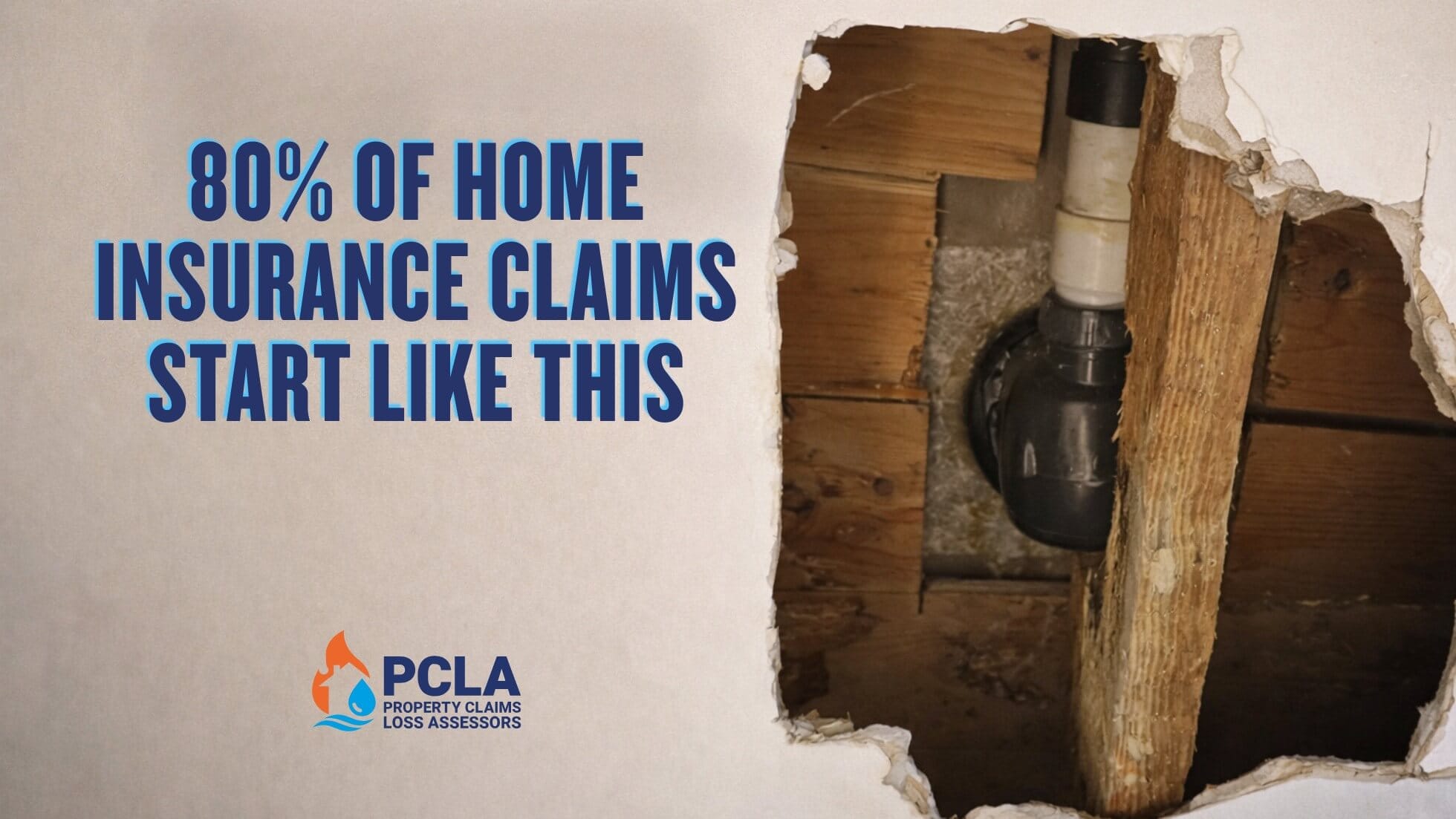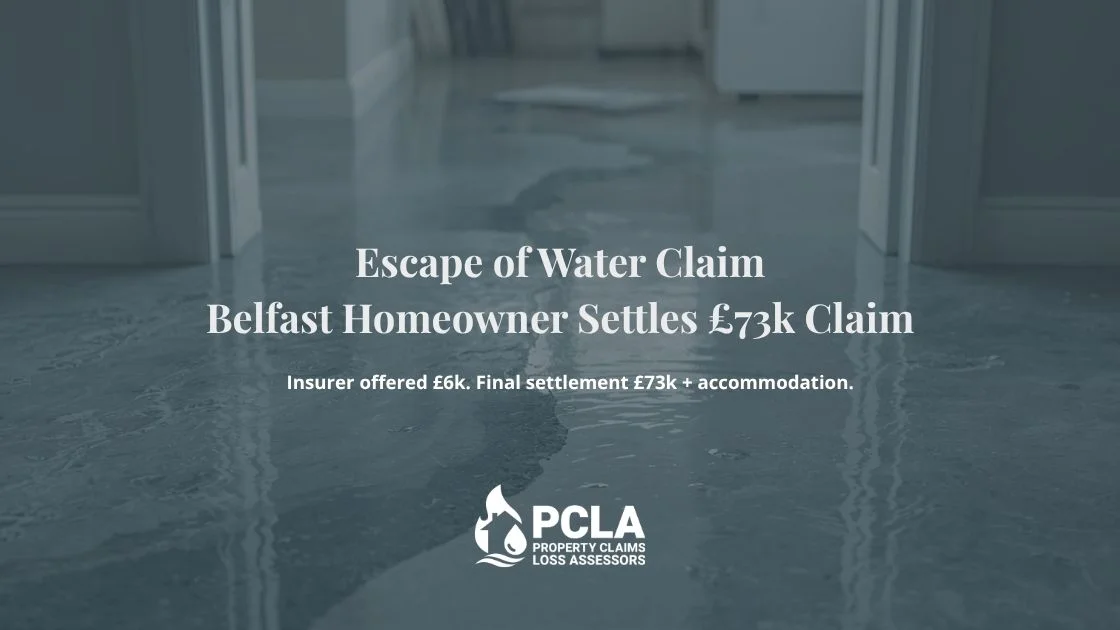Making a successful claim for water damage requires a strategic approach.
- Begin by notifying your insurer, detailing the damage, and documenting everything with clear photographs and videos.
- However, you’ll need to be familiar with your policy’s coverage limits and exclusions to ensure you’re entitled to claim.
- It’s recommended to engage professionals for damage assessments and to negotiate on your behalf.
- Avoid common mistakes such as delayed notifications and insufficient documentation, which often lead to claim denials.
By understanding these elements, you can significantly enhance your chances of a successful claim.
Steps to File Your Claim
Filing a water leak insurance claim requires careful preparation and prompt action to ensure a smooth process.
Start by documenting the damage with detailed photos and videos that highlight the source of the leak and the affected areas.
Notify your insurance company immediately after controlling the leak, providing your policy number and a comprehensive description of the damage to initiate the claim timeline.
It is crucial to review your home insurance policy to understand coverage limits and exclusions before filing.
Consider enlisting the help of a Loss Assessor who can assist with claim adjustments, ensuring you receive a fair settlement. Tip: 6 Reasons To Hire a Loss Assessor.
Keep meticulous records of all communications with your insurer, as these will support your claim and help address any potential disputes.
Assessing Damage and Coverage
Assessing the damage from a water leak is essential to determine the necessity and extent of your insurance claim.
Understanding your coverage limits and exclusions will help clarify which types of damage are eligible for reimbursement.
Proper documentation, including photographs and records of communications with your insurer, is fundamental to effectively support your claim and ensure a smoother process.

Damage Assessment Process
When a water leak occurs, promptly examining the damage is vital to determining whether a claim is warranted.
Begin by evaluating the severity of the damage, as small leaks may not exceed your insurance policy’s excess threshold. Document every affected area with detailed photographs and videos, as this visual evidence is essential for substantiating your claim.
Engaging professional leak detection experts can provide comprehensive reports that clarify the source and extent of the damage, further strengthening your position.
Additionally, consider enlisting a Loss Adjuster to conduct a thorough evaluation, as their detailed reports can greatly influence the insurer’s recommendations.
Related: How to avoid costly mistakes in your water leak claim.
Understanding Coverage Limits
Understanding the intricacies of your insurance coverage is paramount after assessing the damage from a water leak. Familiarising yourself with coverage limits and exclusions can greatly influence the success of your claim. Policy comparisons reveal significant variations among insurers, particularly regarding caps on water escape claims.
| Coverage Aspect | Insurer A | Insurer B |
|---|---|---|
| Sudden Damage Coverage | Yes | Yes |
| Gradual Damage Exclusion | Yes | Yes |
| Coverage Limit | £10,000 | £15,000 |
| Maintenance Exclusion | Yes | Yes |
| Claim Success Rate | 80% | 90% |
Understanding these coverage nuances will empower you to make informed decisions and mitigate potential financial stress in the event of a leak.
Documentation Requirements for Claims
How can meticulous documentation enhance your chances of a successful water leak insurance claim? By providing robust photographic evidence of all visible moisture and damage, you create a compelling visual narrative that supports your claim.
Furthermore, documenting damaged household items through detailed descriptions and valuations ensures that your contents insurance claim is well-founded.
Seek professional reports from leak detection specialists and plumbers, as their assessments can further validate the extent of the damage and the necessary repairs.
Maintain an organised record of all communications with your insurance provider, noting dates, times, and representatives.
Engaging With Insurance Providers
Engaging with your insurance provider is critical in the aftermath of a water leak.
Promptly notifying them of the incident not only expedites the claims process but also safeguards your eligibility for coverage.
Furthermore, meticulous documentation of your claim, including detailed evidence of the damage, is essential for a successful resolution.
Prompt Notification Process
Timely communication with your insurance provider is essential when dealing with a water leak incident. A prompt notification process can greatly affect your notification timeline and overall claims success.
Consider the following communication strategies:
- Notify your insurer immediately to avoid complications or rejection of your claim.
- Have your policy number and a detailed list of damaged items ready to expedite the process.
- Use the provided links or emails for efficient submission of evidence and documentation.
- Regularly follow up with your insurance provider to ensure your claim remains active and is processed promptly.
Documenting Your Claim
Documenting your claim is an essential step in navigating the complexities of water leak insurance. To effectively support your claim, begin by promptly notifying your insurance provider, sharing your policy number and a detailed description of the damage.
Employ claim documentation tips, such as collecting comprehensive evidence—photos, videos, and a list of damaged items with estimated values. This effective evidence gathering will bolster your case.
Submit your documentation through the links or emails provided by your insurer, ensuring clarity and accessibility for the claims adjuster.
Familiarise yourself with the specific requirements and timelines of your claims process, and maintain regular follow-up communication with your insurance company to keep your claim active and address any additional needs.
Managing the Claims Process
When faced with a water leak, managing the claims process can feel overwhelming, but taking proactive steps can streamline your experience.
To ensure effective claims timeline management, consider the following strategies:
- Report Promptly: Notify your insurance company immediately, providing your policy number and detailed descriptions of the damage.
- Document Thoroughly: Capture comprehensive photographic evidence of both the source of the leak and the property damage to support your claim.
- Know Your Policy: Review coverage limits and exclusions to understand what is applicable for sudden versus gradual water damage.
- Engage a Loss Assessor: Their impartial assessment can greatly impact the outcome of your claim.
These effective communication strategies will help you navigate the claims process with confidence, fostering a smoother resolution.
Importance of Professional Support
Managing a complex water leak insurance claim can be significantly enhanced with professional support. Engaging experts, such as Loss Assessors and public adjusters, offers invaluable guidance. They ensure that all evidence is accurately documented and that the claim is in accordance with your policy terms. Employing independent leak detection services strengthens your case with credible documentation, while hiring qualified contractors guarantees industry-standard repairs, which are essential for reimbursement.
| Professional Support | Benefits | Key Considerations |
|---|---|---|
| Loss Assessor | Optimises claim value | Expertise in insurance law |
| Leak Detection Services | Accurate leak identification | Use of advanced technology |
| Certified Plumbers | Guarantees quality repairs | Compliance with standards |
This strategic approach increases the likelihood of a successful claim approval.
Common Reasons for Claim Denial
Many homeowners are surprised to learn that a significant number of water leak insurance claims are denied due to specific, often overlooked reasons. Understanding these can help prevent unnecessary frustrations:
- Maintenance Neglect: Claims can be denied if damage results from a lack of maintenance, as insurers often cover sudden incidents rather than general wear and tear.
- Vacant Property: Properties that have been unoccupied for 60 days or more may lead to claim denials due to the associated risks.
- Blocked Gutters: Roofing leaks caused by blocked gutters or degraded materials are frequently excluded from coverage.
- Delayed Action: Failing to take timely action to mitigate damage after discovering a leak can result in claim rejection.
Awareness of these factors can empower homeowners to safeguard their interests effectively.
Preventative Strategies for Homeowners
Effective prevention strategies can significantly reduce the risk of water leaks in homes, ultimately safeguarding both property and finances.
Homeowners should prioritise annual plumbing inspections to identify potential leaks early, allowing for timely maintenance. Investing in modern materials by replacing old or corroded pipes considerably minimises leak risks.
Moreover, installing water pressure regulators helps manage high water pressure, preventing undue stress on plumbing systems. Incorporating smart leak detection devices can alert homeowners to moisture issues, enabling immediate action to avert extensive damage.
Regular maintenance tips, such as cleaning gutters and downpipes, are essential to prevent water overflow and accumulation, which can lead to leaks.
Together, these strategies foster a proactive approach to home protection and financial security.
Key Takeaways
- Notify your insurance company immediately after controlling the leak and provide a detailed description of the damage.
- Document all damage thoroughly with photographs and videos, including the source of the leak and the affected areas.
- Familiarise yourself with your policy’s coverage limits and exclusions to ensure eligible damages are claimed.
- Maintain organised records of all communications with the insurer to support your claim effectively.
- Engage professionals, such as leak detection experts or Loss Assessors, to validate the damage and assist in the claims process.



